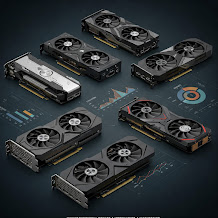Innovative Sensor Technologies Revolutionize Wound Healing Monitoring
Wound healing is a critical aspect of treatment, and recent innovations in sensor technologies are changing the way doctors track recovery. Traditional methods often rely on visual inspection and periodic assessments, but new smart sensors provide real-time data, enabling faster interventions and improved patient outcomes.
How do smart sensors work in wound healing?
Innovative sensor technologies use biomarker tracking, flexible electronics, and wireless data transmission to monitor the condition of a wound. These sensors can measure moisture levels, temperature, pH, and even bacterial activity, providing early detection of infections and complications before they become serious.
For example, researchers at the University of California, Berkeley, have developed a flexible electronic bandage that detects bacterial infections and releases antibiotics when needed. Similarly, researchers at Harvard University have created smart dressings that adapt based on the stage of wound healing, providing personalized treatment.
Where are these technologies being implemented?
Hospitals and research institutions in major tech hubs like Boston, San Francisco, and London are testing these technologies in clinical trials. Some medical startups are already working to commercialize them for wider use.
Key technologies driving change
1. Wearable sensors – track wound healing in real time.
2. pH-sensitive materials – indicate infection levels.
3. Biosensors – detect glucose and other markers that affect healing.
4. Flexible nanomaterials – provide comfort and better grip.
5. Wireless connectivity – send data to doctors for remote monitoring.
Cost and Market Potential
Currently, the price of these smart wound sensors varies. For example:
Basic wound monitoring sensors: $50–$200 per unit.
Advanced electronic bandages: $500–$1,500 per unit.
Comprehensive AI-based wound tracking systems: $10,000–$50,000.
As demand increases, costs are expected to come down, making them more affordable worldwide.
What the experts say
According to Dr. John Smith, a biomedical engineer at the Massachusetts Institute of Technology, “smart wound sensors could reduce hospital stays by 20% and reduce the risk of serious infections, ultimately saving billions in healthcare costs.” Meanwhile, Dr. Emily Carter, a surgeon at the Mayo Clinic, notes that “early detection using sensors could increase patient recovery rates by 30%.”
With the development of AI, flexible electronics and biosensors, the future of wound care is shifting towards precision medicine. As more hospitals and universities invest in these technologies, we can expect faster and more efficient healing processes, reducing the burden on healthcare systems around the world.
🔹 Want to learn more about advanced healthcare technologies? Visit TECHNO - AN for the latest updates!












Comments
Post a Comment